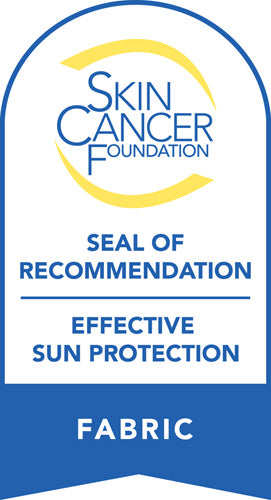When it comes to testing UPF clothing, there are several things you need to understand. This is how the process actually works.
Did you know that up to 90% of skin cancer is caused by UV radiation?
As the weather gets warmer, you're probably eager to spend as much time outdoors as possible. Whether you enjoy water sports, horseback riding, hiking, or jogging, the sunshine is calling!
But as you enjoy the fresh air, it's important to protect your skin from sun damage. Sunscreen only solves part of the problem. You've probably heard about sun-protective clothing. But what is it, and how is it checked for effectiveness?
Keep reading to learn all about UPF clothing and its rigorous testing process.
What Is UPF?
UPF stands for Ultraviolet Protection Factor. It's a rating of how well a piece of clothing blocks ultraviolet radiation from the sun.
You know how on sunscreen bottles you see SPF numbers, telling you how protective the sunscreen is? UPF is the garment equivalent of this.
When you see a UPF number, the higher the better. "UPF 30" means it blocks 1/30th of the UV radiation from sunlight, and UPF 50 means it blocks 1/50th.
Fabric material, the density of the weave, and color can all affect how protective a piece of clothing is from sun damage.
For example, tightly woven material blocks UV better than a loose weave. Darker fabrics tend to absorb light, which helps keep it from reaching your skin. Lighter materials tend to reflect light, allowing more of the UV to reach your skin.
UPF ratings are broken up into Good (15-24), Very Good (25-39), and Excellent (40-50+). Here at BloqUV, all of our BloqTech garments are UPF 50+.
Why Is UPF Clothing Important?
According to the Skin Cancer Foundation, one of the main causes of skin cancer is UV radiation. Therefore, wearing UV-protective clothing may aid in deterring skin cancer.
UPF clothing blocks both UVA and UVB radiation. This is good because both types are contributing factors to long-term skin damage.
Wearing UPF clothes may also help keep your skin looking younger. The SCF states that "90% of skin aging is caused by the sun." Protecting your skin from UV rays may help dissuade wrinkles and other signs of premature aging.
In order for a garment to be termed sun-protective, it must have a minimum UPF of 15. Your average white cotton T-shirt has a UPF of 5. This means regular clothing is doing very little to shield you from UV rays.
Thus UPF-rated clothing is important if you spend any time in the sun. When you wear sun protection outfits, you only need to apply sunscreen to exposed skin.
Some companies add a chemical dip or spray to their garments to add UPF value. These chemicals are only loosely researched and may get absorbed by your skin. They also wash out after repeated use.
UPF value doesn't wash out of BloqUV's clothing, because we don't use dipped or sprayed-on chemicals. UV protection is inherent in our proprietary BloqTech fabric, because of its special combination of material and weave.
Our UPF also works wet or dry. This makes all of our sun protection outfits multifunctional. So feel free to wear your BloqUV activewear jogging, and then jump right into the pool!
UPF Testing
In order to be labeled sun-protective, UPF brands must apply for certification through this rigorous testing process. Each country has its own standards of testing. In the U.S., this standard is set by the American Association of Textile Chemists and Colorists (AATCC).
To test UPF, an independent laboratory measures how much UV light passes through a certain fabric. An artificial light source is used to mimic UV radiation produced by the sun. Multiple samples are tested for every color of the fabric, both wet and dry.
The labs use either a spectrophotometer or a spectroradiometer to measure the UV rays that seep through the fabric. This is a specially calibrated device used to analyze UV transmissions.
The device reports the UV levels on a transmittance scale from 0 to 1. Multiplying this decimal point number by 100, you get a transmission percentage.
The results from each sample of a particular fabric are averaged together to get the mean UPF for that fabric. The standard error is then calculated, by finding the standard deviation (how much the UPF varies between samples) and adjusting for the number of samples.
This standard error is subtracted from the mean UPF. Then the resulting UPF is rounded down to the nearest multiple of five.
This gives you the final, reported UPF value of a fabric.
Fabric samples are tested in new condition, and also after they have gone through processes that mimic everyday wear and tear. For example, they get stretched, soaked, and weathered just like they'd experience when you wear your UPF clothing.
For some labs, this involves simulations such as running your garment through 40 wash and dry cycles. This lets them measure the UPF value at the end of the lifespan of your garment. And it is this "worst-case scenario" UPF value that ends up on the sales tag.
Stock Up on UPF Clothing
If you love having fun in the great outdoors, UPF clothing is an essential part of your gear. Even if you're just driving around in the car or out running errands, exposure to sunlight can put you at risk of long-term, cumulative skin damage.
BloqUV can help you protect yourself from UV radiation. All our UPF fabrics are soft and stretchy for maximum comfort during sports or casual lounging. They're also durable and moisture-wicking.
Our garments provide you with UPF 50+ protection, the highest possible ranking. So you can feel good wearing our sun-ready styles.
Start browsing our collections today, or contact us for more information!



